There is more than one path to a successful food company.
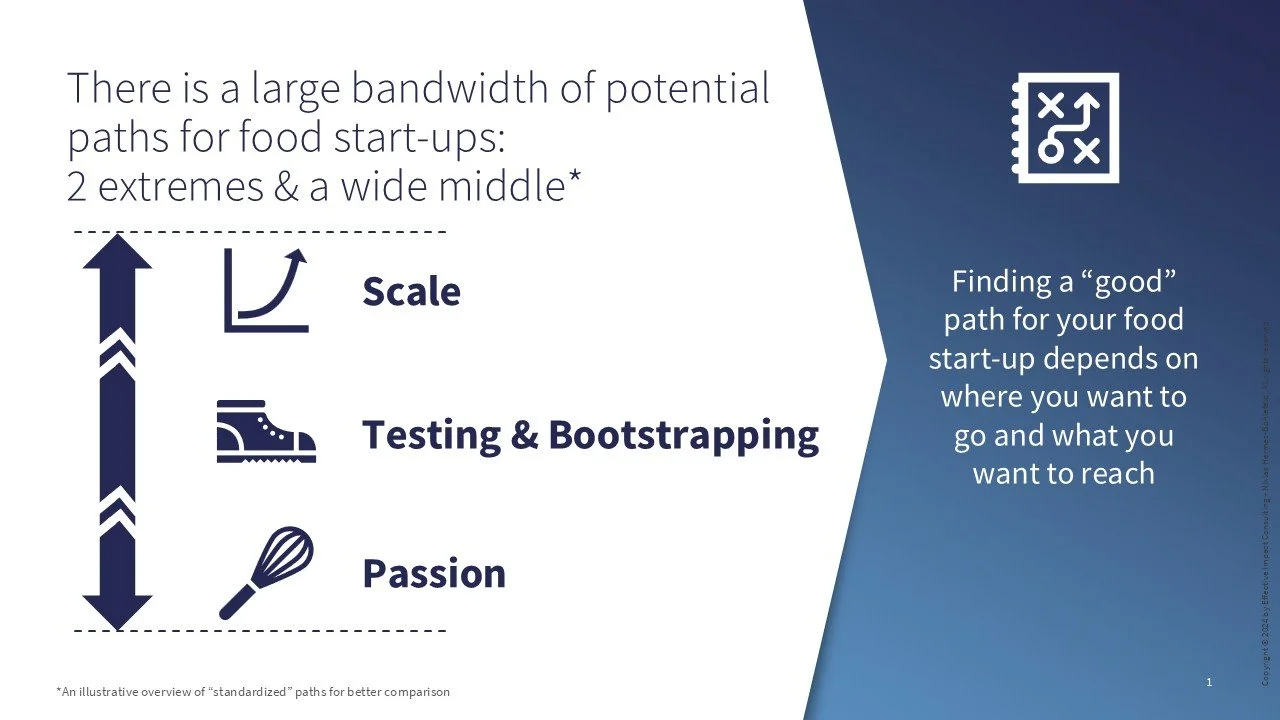
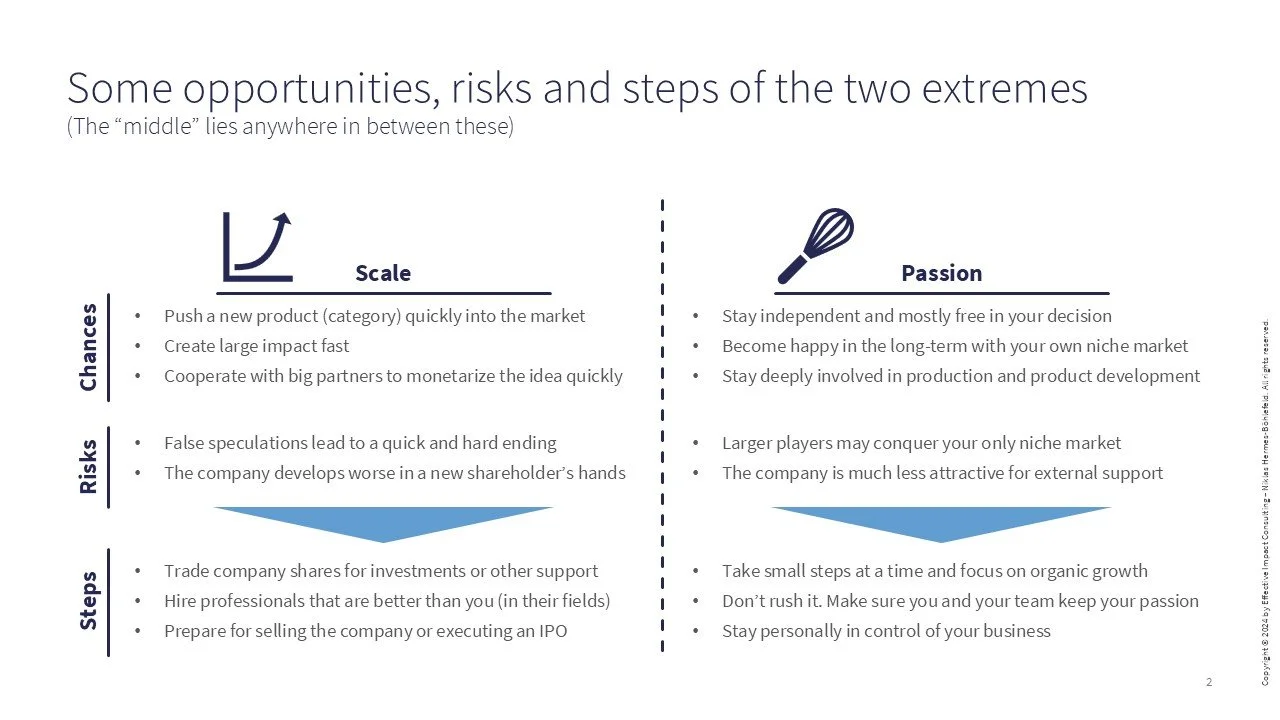
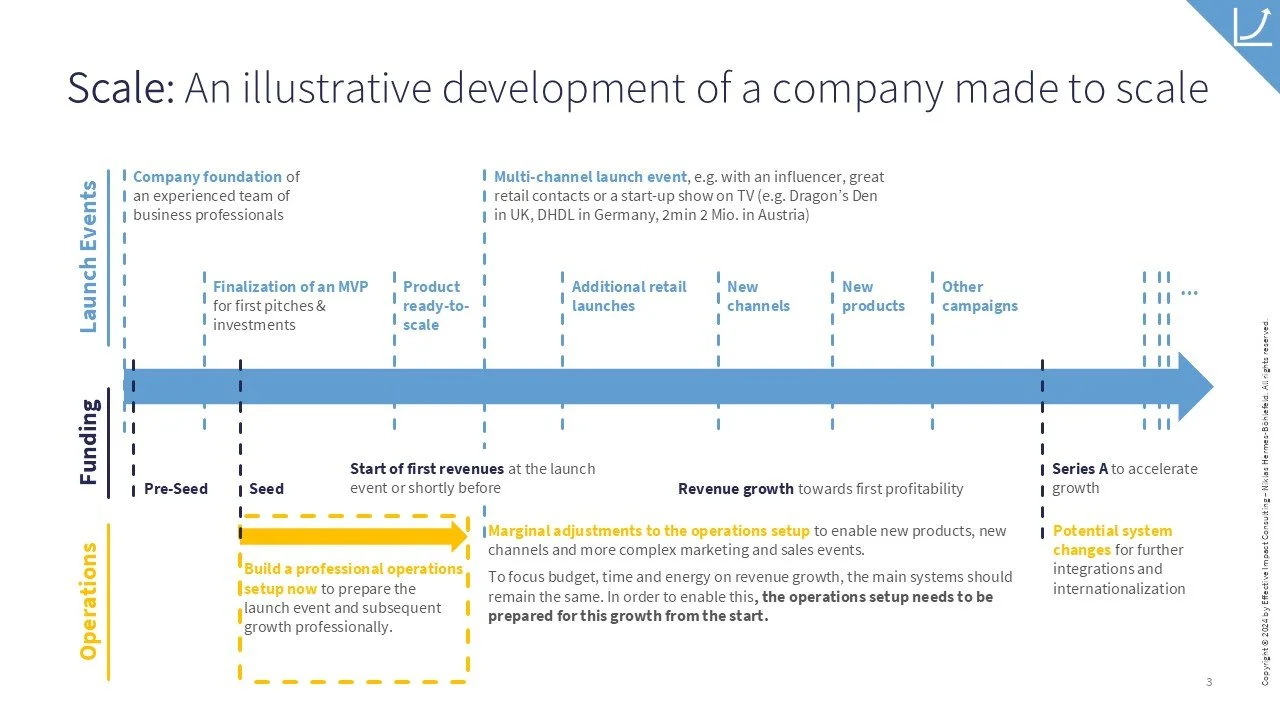
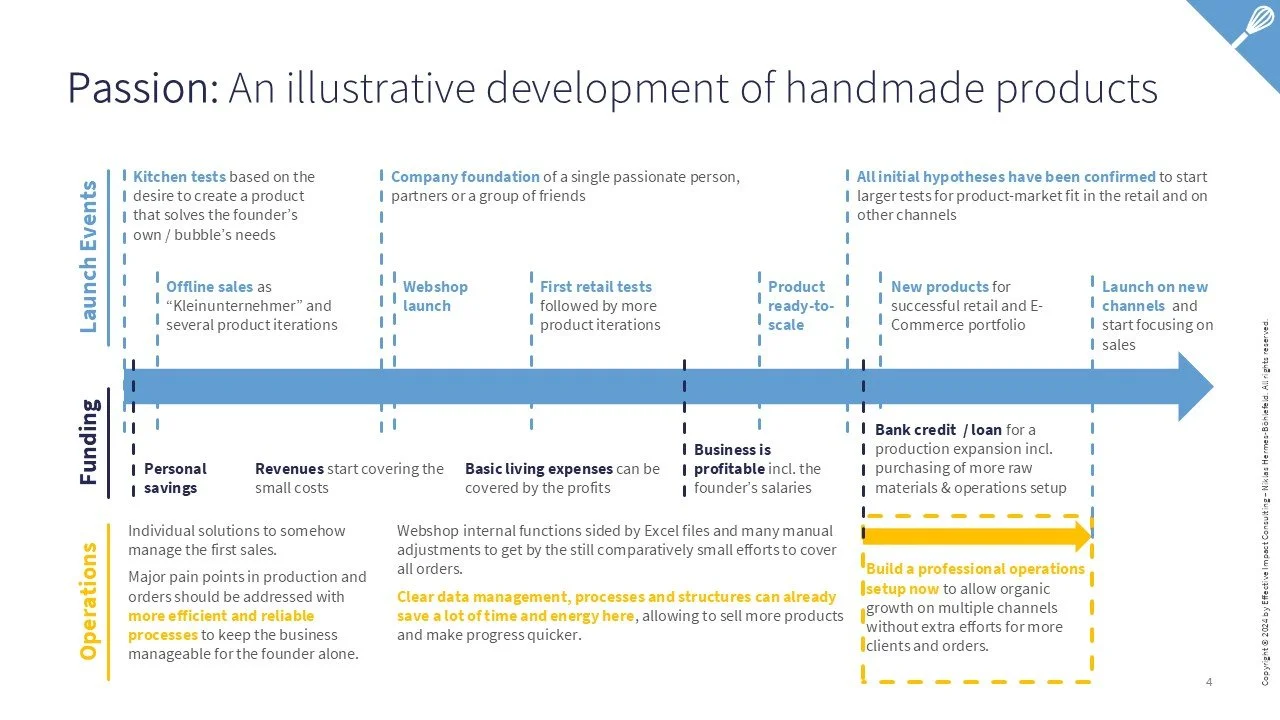
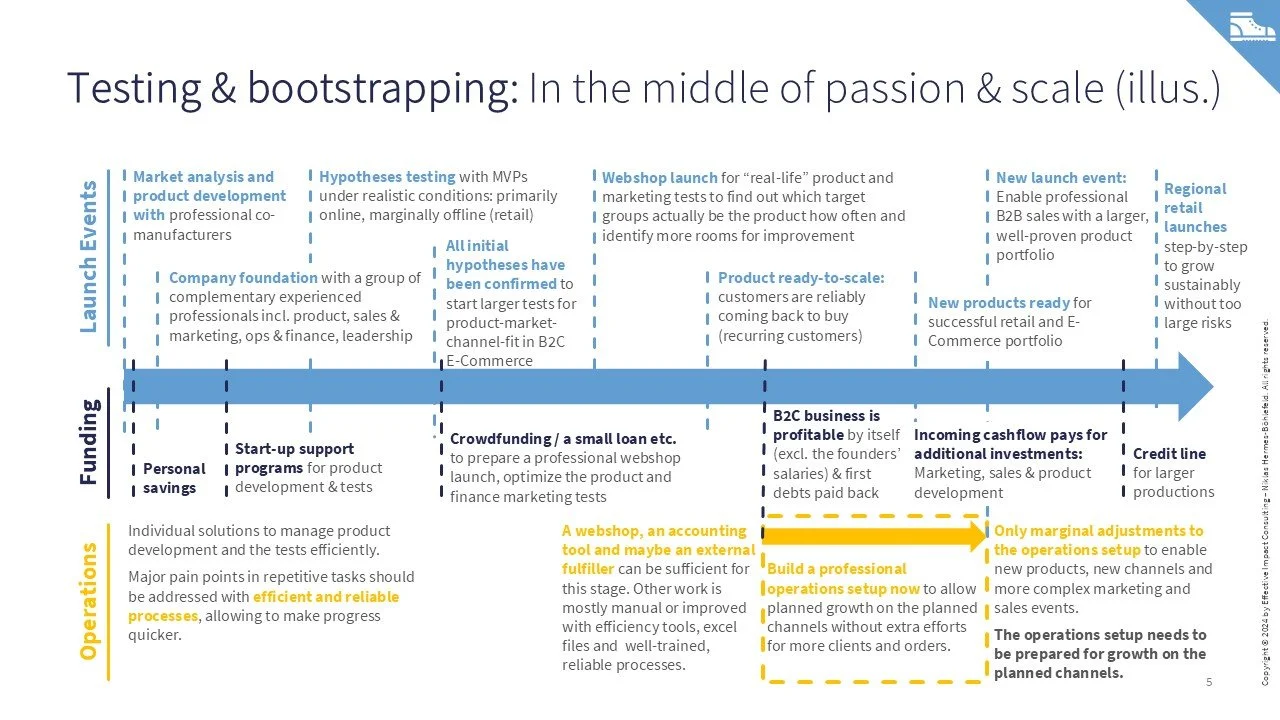
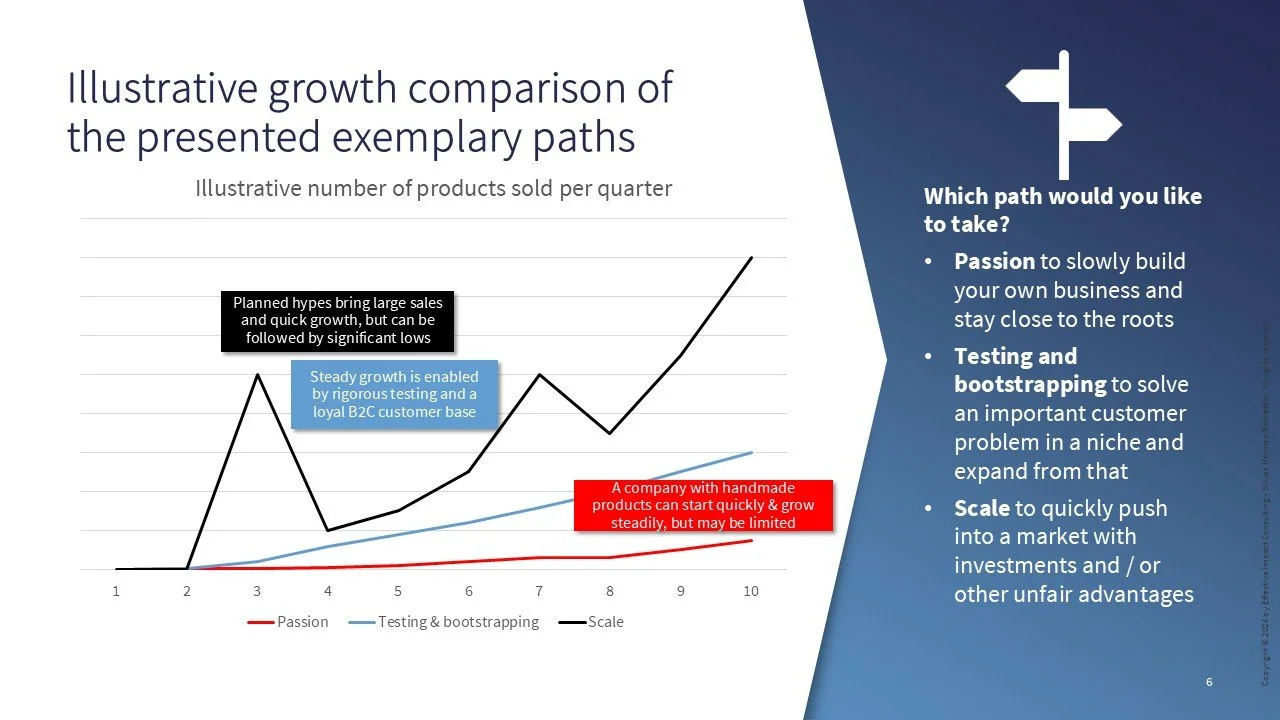
Choose yours wisely and be aware when best to build a professional operations setup.
Especially founders and early-stage food businesses should be aware of the different possibilities, opportunities, risks and important milestones.
𝗛𝗲𝗿𝗲 𝗶𝘀 𝗮𝗻 𝗼𝘃𝗲𝗿𝘃𝗶𝗲𝘄 𝗼𝗳 𝟯 𝗶𝗹𝗹𝘂𝘀𝘁𝗿𝗮𝘁𝗶𝘃𝗲 𝗽𝗮𝘁𝗵𝘀 - 𝟮 𝗲𝘅𝘁𝗿𝗲𝗺𝗲𝘀 𝗼𝗻 𝗮 𝗹𝗮𝗿𝗴𝗲 𝗯𝗮𝗻𝗱𝘄𝗶𝗱𝘁𝗵; 𝗮𝗻𝗱 𝗮 𝘄𝗶𝗱𝗲 𝗺𝗶𝗱𝗱𝗹𝗲 - that I’ve seen and “standardized” for better comparison based on my current knowledge. I also added example companies that grossly fit the described paths (how they started):
📈 𝗦𝗰𝗮𝗹𝗲 (𝗲𝘅𝘁𝗿𝗲𝗺𝗲):
Companies that often work with an “up or out”-principle. Either they scale up or they are “swallowed up” by the market / competition, because the investors want their money back multiplied and quickly. This path is needed in a “winner takes it all market”, or applied where founders & investors see an innovative business opportunity with large market potential.
--> Have all important operations processes ready to scale before the big launch event in order not to lose momentum once shareholders focus on growing revenues.
share, Planted, Infinite Roots®, PROJECT EADEN, Formo
🥄 𝗣𝗮𝘀𝘀𝗶𝗼𝗻 (𝗲𝘅𝘁𝗿𝗲𝗺𝗲):
Companies where the self-made products of the highest quality are the most important aspect for the founder. In the food space it would be someone who cooks or bakes their own loved products that they want to share with their friends and more people, and then they slowly turn this hobby into a business.
-->It can be enough to invest in a professional operations setup once all initial hypotheses are confirmed in online & offline tests (e.g. retail / food service) and the business reached profitability.
Veeze.de, djoon foods, Luicella's Ice
👢 𝗧𝗲𝘀𝘁𝗶𝗻𝗴 & 𝗯𝗼𝗼𝘁𝘀𝘁𝗿𝗮𝗽𝗽𝗶𝗻𝗴 (𝘄𝗶𝗱𝗲 𝗺𝗶𝗱𝗱𝗹𝗲): In between the two extremes above I've mostly seen this approach: Constantly testing hypotheses while not using too much capital and not taking too large risks, but speeding up when there's a good chance.
--> A professional operations setup becomes valuable once the company can start focusing on sales, because all initial hypotheses have been confirmed, the product is ready to scale & production is flexible enough, and customers are reliably recurring.
zeroLabs, Moruga Cacao, malunt, Foodasis GmbH
❓𝗪𝗵𝗲𝗿𝗲 𝗼𝗻 𝘁𝗵𝗲 𝗯𝗮𝗻𝗱𝘄𝗶𝘁𝗵 𝗼𝗳 𝗽𝗮𝘁𝗵𝘀 𝗱𝗼 𝘆𝗼𝘂 𝘀𝗲𝗲 𝘆𝗼𝘂𝗿 𝗳𝗼𝗼𝗱 𝘀𝘁𝗮𝗿𝘁-𝘂𝗽? 𝗪𝗵𝗶𝗰𝗵 𝗼𝗻𝗲 𝗱𝗼 𝘆𝗼𝘂 𝘄𝗮𝗻𝘁 𝘁𝗼 𝘁𝗮𝗸𝗲?
And are you happy with the path you took, or would you have taken some decisions differently based on new learnings?
While looking at illustrative paths, remember that every business is unique.